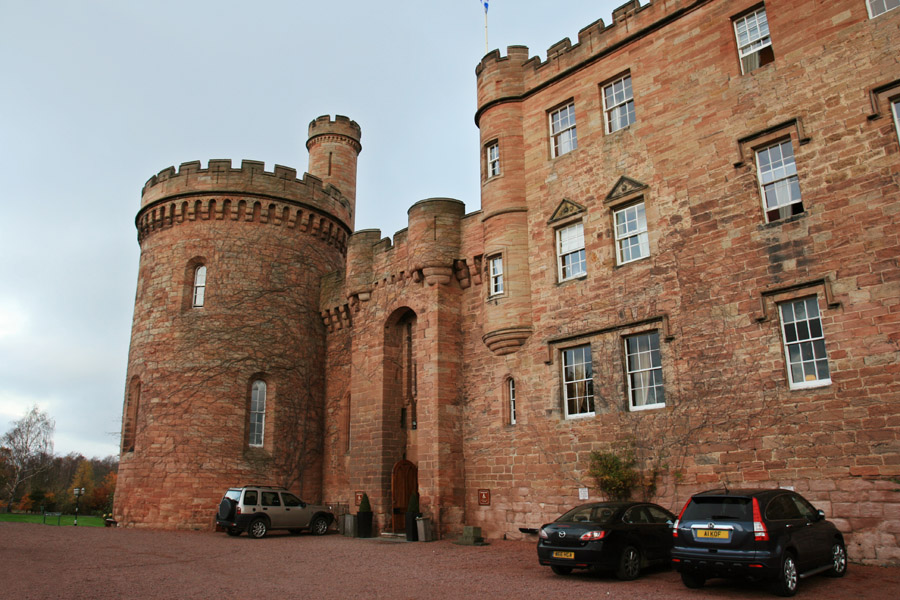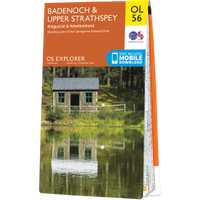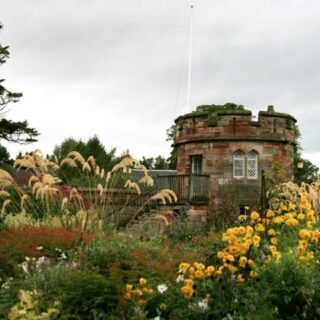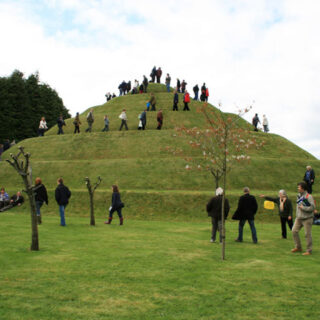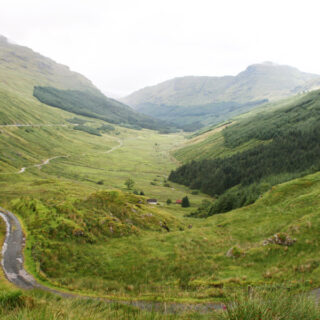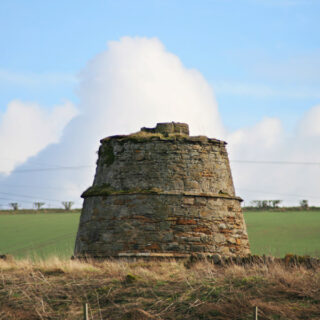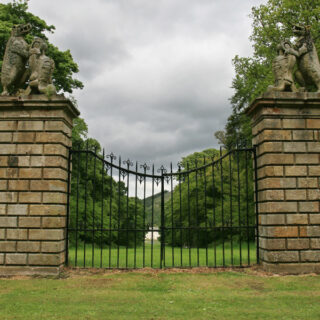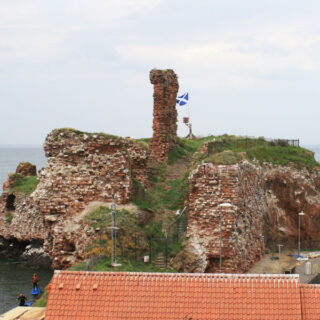,%20Inverness-shire/IMG_8902.JPG)
,%20Inverness-shire/IMG_8902.JPG)
Ruthven Barracks were built between 1719 and 1721, however they stand on the site of a much earlier castle.
Standing on an enhanced glacial mound some 46 metres in height, the castle occupies a strategically-important site being close to a fording point of the nearby River Spey. The river is prone to flooding, and in the past the castle mound would have been regularly surrounded by impenetrable swamps.
The first mention of Ruthven Castle is in 1229, when it belonged to William Comyn, the first Lord of Badenoch. There is no archaeological evidence to suggest that the site was occupied before the 13th century, making it likely that the castle was built either by the Comyn family, or the Meic Uilleim (MacWilliam) family from whom the Comyns obtained the land (the Meic Uilleim revolted against Alexander II and the rebellion was put down by William Comyn).
Ruthven Castle was the chief seat of the Comyns’ Badenoch lordship, and when the lordship was given by Robert II to his son Alexander Stewart, the Earl of Buchan (better known as the Wolf of Badenoch), it became his main seat.
According to legend a tall man dressed in black, supposedly the Devil, arrived at Ruthven Castle and challenged the Wolf of Badenoch to a game of chess. When the man won the game, a terrible storm began, with hail, thunder and lightning.
The storm lasted all night, but in the morning it was calm, and outside the castle the Wolf’s men were discovered dead and blackened as if struck by lightning. The Wolf himself was found dead in the Great Hall of the castle, his body unmarked but the nails ripped out of the soles of his boots.
This is often said to have happened in 1394, however the Wolf of Badenoch actually died in 1405 and was buried in Dunkeld Cathedral.
Around 1440 the lordship of Badenoch (and therefore presumably Ruthven Castle) was granted by James II to Alexander Seton (later Alexander Gordon, and later created the 1st Earl of Huntly). Seton’s daughter Elizabeth married Alexander of Islay, Lord of the Isles and and Earl of Ross, and gave birth to John, the last Lord of the Isles.
In 1451 the castle at Ruthven is said to have been stormed and occupied by John during his revolt against James II. It would seem from the family history that John was taking the castle from his mother’s relatives, the Gordons. Since the castle was still in Gordon hands right into the late 17th century, it may be that the account of John’s attack on the castle may have become confused.
At the end of the 16th century George Gordon, the 6th Earl of Huntly and later 1st Marquess of Huntly, built a new, much grander castle. It is said he had to build it twice, it being burned down almost immediately either as a result of an attack or due to the negligence of his servants.
This second castle was fought over during the civil wars of the 1640s, and changed hands several times. In 1647 it was attacked and captured by General Leslie, and in 1649 it was once again attacked then garrisoned Cromwell’s troops.
In 1685 the castle, along with the lordship of Badenoch, was granted to George Gordon, the 4th Marquess of Huntly and 1st Duke of Gordon, by the Catholic James VII. But following the Revolution of 1688 Ruthven Castle was in Protestant hands, and during the Jacobite Rising of 1689 it was badly damaged by John Graham of Claverhouse, the 1st Viscount of Dundee (better known as Bonnie Dundee).
In the early 18th century significant ruins of the castle still stood, and were described by a local historian. Taking the form of a courtyard castle, the south wall was 2.7m thick and through it was an arched gateway with a double iron gate and portcullis.
Today on the south side of the site are stone-built structures underneath the south-west corner of the barrack complex, and also under the stable block, with a gap in between. It is tempting to speculate that these older-looking sections of wall could be the remains of the old castle’s entrance gateway.
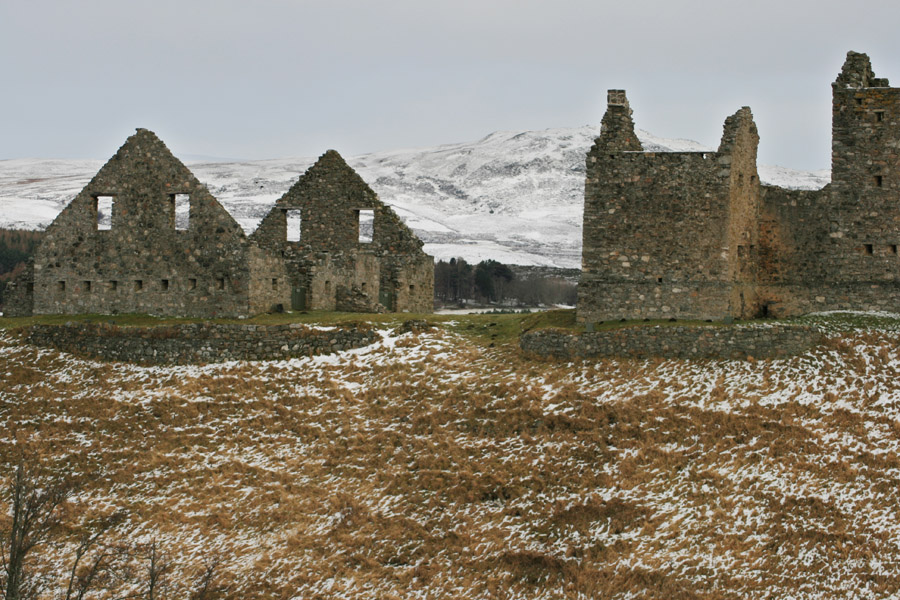
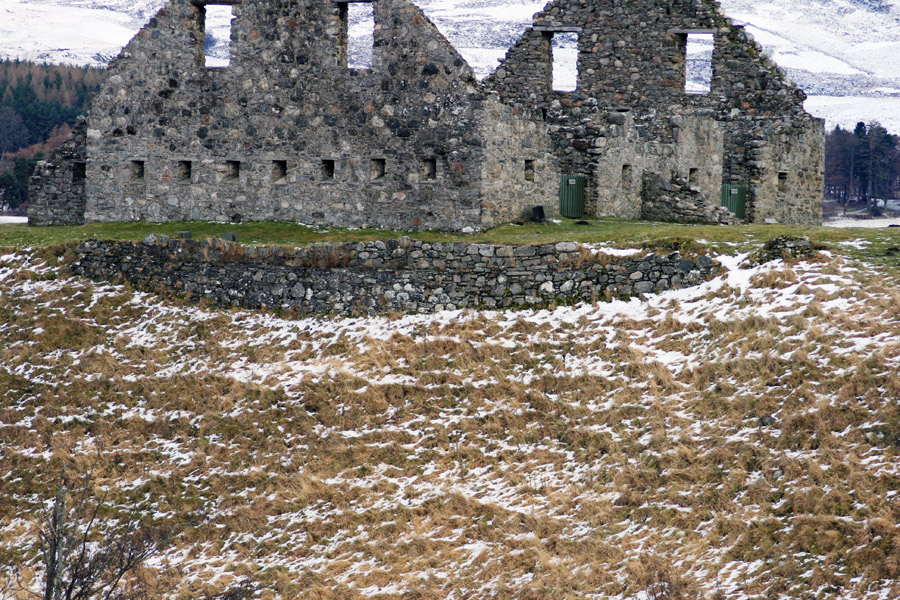
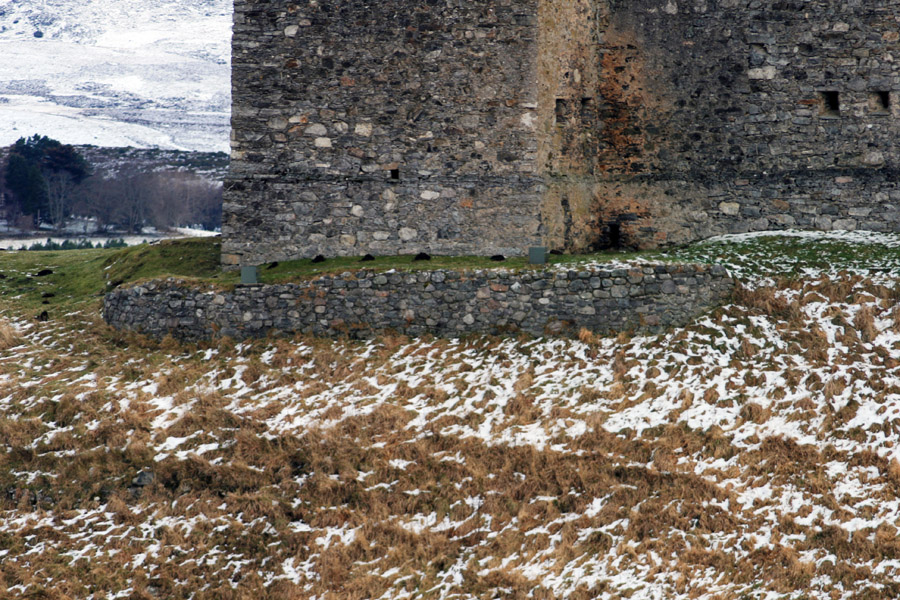
Following the the Jacobite Rising of 1715 the British Government built four barracks complexes at strategic locations across the Highlands, and Ruthven Barracks was one of them. The remains of the old castle were removed, although it’s quite possible that old stones were recut and used in the new buildings.
An archaeological excavation in 1983 revealed dressed medieval stones complete with pink mortar reused as foundations under the barracks’ main forestair and remnants of medieval stone structures around the well. Assorted medieval artefacts dating to the first half of the 16th century were also found.
The importance of Ruthven Barracks was short-lived, as on the 17th of April 1746, the day after the Battle of Culloden, the barracks were set alight by the Jacobites and never rebuilt, leaving them more or less in the state they are in today.
Alternative names for Ruthven Castle
Castle of Ruthven; Rothewan; Ruthven Barracks
Where is Ruthven Castle?
Ruthven Castle is in the parish of Kingussie and Insh and the county of Inverness-shire.
Grid reference: NN 76473 99756
Lat / long: 57.072288, -4.039102
